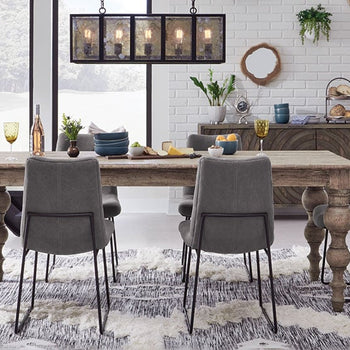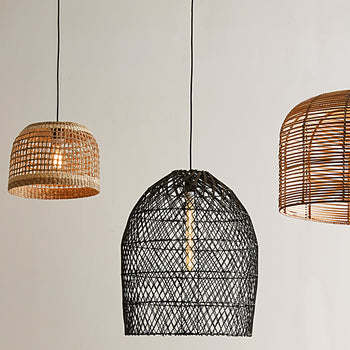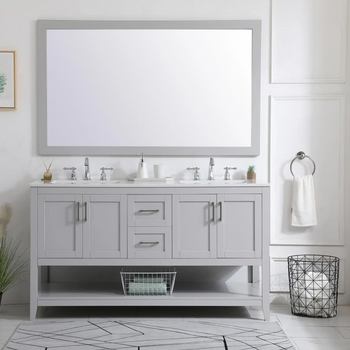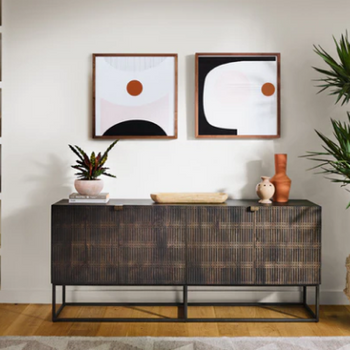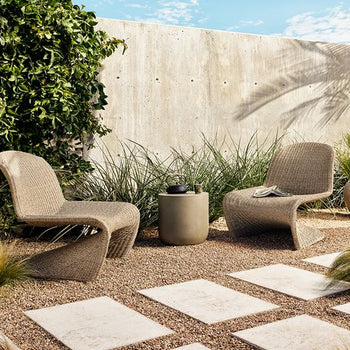- PRICE MATCH GUARANTEED
-
ZERO SALES TAX
(excl. UT, AZ, CA)
- PRODUCT QUESTIONS?
Product Description:
How to Conserve Water with WaterSense®
Water conservation helps maintain freshwater sources of water, protect the environment, and keep utility costs down. With this in mind, more and more companies are designing innovative, water-efficient plumbing fixtures that help reduce unnecessary water usage.
An easy way to know what fixtures will help conserve water—and lower your water bill—is to look for faucets, showerheads, toilets, and other plumbing fixtures that are WaterSense® certified.
WaterSense® = Water-Saving
There’s been a growing need to conserve water throughout the country, especially with water shortages, droughts in western states, and an increase in the price of water. Conserving water means using our water resources wisely and efficiently to reduce unnecessary water usage, which means less water going down the drain and more water staying in the environment where it nurtures and protects all kinds of life.
To expand efforts at water conservation across the country, the U.S. Environmental Protection Agency (EPA) has outlined standards for water-efficient products. Water-saving products that meet these standards earn the WaterSense® stamp of approval, making them easier to identify as consumers.
The EPA’s WaterSense® program is a national partnership with water utilities, manufacturers, retailers, and more, with efforts to support an ethos of water conservation through water-efficient products and practices. The criteria set forth by the EPA must be met and vetted by qualified third-party agencies to become WaterSense® certified.
What Does WaterSense® Certified Mean?
Products bearing the WaterSense® label have been certified as 20% more efficient, using 20% less water while also saving energy and maintaining high performance. The WaterSense® label mainly applies to plumbing fixtures like toilets, showerheads, and faucets.
To gain the certification, the plumbing product must rate high in both water efficiency and flushing effectiveness to meet strict water flow performance guidelines established by the WaterSense® program. The gallons per flush (GPF) should be 1.28 or lower for toilets, whereas showerheads must be 2 GPM (gallons per minute) to earn the WaterSense® label.
Different States, Different Water Rules
The water infrastructure all over the country is slowly becoming more water-efficient, thanks to EPA’s efforts to bring WaterSense® to more homes and communities. In fact, many states and cities require that new or replacement faucets, toilets, and showers meet the EPA’s WaterSense® water-saving standards. They even break down water use between kitchen and bathroom faucets. See below for a few different state’s current water maximum flow rules:
California
- Showerheads: 1.8 GPM
- Toilets: 1.28 GPM
- Urinals: 0.125 GPM
Texas
- Toilets: 1.28 GPM
- Urinals: 0.5 GPM
Georgia - Must be WaterSense-certified
- Kitchen Faucets: 2.0 GPM
- Bathroom Faucets: 1.5 GPM
- Showerheads: 2.5 GPM
- Toilets: 1.28 GPM
- Urinals: 0.5 GPM
New York - Must be WaterSense-certified
- Kitchen Faucets: 2.2 GPM
- Bathroom Faucets: 1.5 GPM
- Showerheads: 2 GPM
- Toilets: 1.28 GPM
- Urinals: 0.5 GPM
What’s the Difference between GPF and GPM?
Gallons per flush (GPF) is specific for toilets and urinals, whereas Gallons Per Minute (GPM) is also known as the flow rate, which is applicable for showerheads, faucets, and hand showers.
The lower the GPF or GPM amount, the less water used, which means less water wasted. The ideal GPF for an eco-friendly toilet is less than 1.28 GPF to conserve water, even though 1.6 GPF is acceptable in most American states.
Water-saving Products
Toilets
The highest water-using fixture in your home is the toilet. To conserve the most water, invest in a water-saving toilet that doesn’t use more than 1.28 gallons of water per flush—this is the WaterSense® requirement and 20% less than the federal standard of 1.6 GPF. Switching your outdated and inefficient toilet to a WaterSense® toilet could save 13,000 gallons of water per year, as well as an average of $140 on your water bill.
Here are our recommendations for WaterSense®-certified toilets for your home:
If you need help choosing an eco-friendly toilet, we have a guide for you here.
If you want to go a step further in conservation and money savings, consider an integrated bidet toilet combo or a bidet seat attachment. Not only do bidets and bidet attachments use minimal water (⅛ of a gallon), but they also reduce how much paper waste you use in terms of toilet paper, which also saves the trees while saving you money.
Faucets
Bathroom faucets that use no more than 1.5 gallons per minute (less than the 2.2 GPM standard) without sacrificing performance can earn the WaterSense® accreditation. Retrofitting your old faucets with a new water-saving WaterSense® faucet or topping it with a WaterSense® aerator can help your household save 700 gallons of water per year, as well as the costs of energy used to heat the water.
Here are our recommendations for WaterSense®-certified bathroom faucets for your home:
Showerheads
Showerheads—or the time spent in the shower—can contribute to around 17% of your total household water usage. Water-saving showerheads featuring the WaterSense® label demonstrate that they use no more than 2 GPM—which is lower than the federal standard of 2.5 GPM. However, though the GPM is lower, the WaterSense® certification also ensures a satisfactory shower equal to, if not better than, standard showerheads. By switching to a WaterSense® showerhead, your family could save 2,700 gallons of water annually and an average of 330-kilowatt hours of electricity/energy to heat the water.
Here are our recommendations for WaterSense®-certified showerheads for your home:
Other Ways You Can Conserve Water in Your Home
Do you know how many gallons of water your home uses on a day-to-day basis? The average water use for a home falls between 80-100 gallons per day per person. That’s a lot of water! Although water-saving plumbing fixtures can help you cut down on this water use, below are some behavioral changes you can make that can help conserve water:
- Take a shower instead of a bath.
- Turn off the tap when brushing your teeth or soaping up in the shower.
- Do full loads while doing laundry or dishes, rather than half-full or smaller loads.
- Tend to leaky faucets.
- Don’t overwater your lawn; consider installing rain sensors to your irrigation system.
WaterSense® is the Name, Water Conservation is the Game
Water conservation is fast becoming the norm in plumbing fixtures, and for good reason. We don’t need as much water as we think we do, and the new standards set by EPA’s WaterSense® program prove that.
Using certified WaterSense® products is how you can personally bring your home up to speed to help conserve water. Just look for the WaterSense® label to identify the products that meet water efficiency and functionality requirements.
Choose WaterSense® certified water-efficient products to save water, the environment, and some money while you’re at it. It’s a win-win-win!


